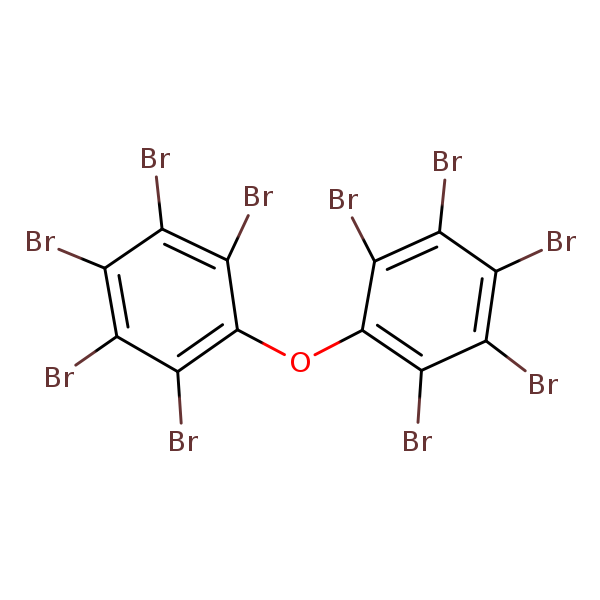2,2',3,3',4,4',5,5',6,6'-Decabromodiphenyl ether (BDE-209)
CASRN 1163-19-5 | DTXSID9020376
- Toxicological Review (PDF) (126 pp, 820 K)
- IRIS Summary (PDF) (25 pp, 232 K)
Noncancer Assessment
Reference Dose for Oral Exposure (RfD) (PDF)
(25 pp, 232 K)
Last Updated: 06/30/2008
| System | RfD (mg/kg-day) | Basis | PoD | Composite UF | Confidence |
|---|---|---|---|---|---|
| Nervous | 7 x 10 -3 | Neurobehavioral effects |
NOAEL
:
2.22
mg/kg |
300 | Low |
Reference Concentration for Inhalation Exposure (RfC) (PDF)
(25 pp, 232 K)
Last Updated: 06/30/2008
Information reviewed but value not estimated.
Cancer Assessment
Weight of Evidence for Cancer (PDF)
(25 pp, 232 K)
Last Updated: 06/30/2008
| WOE Characterization | Framework for WOE Characterization |
|---|---|
| Suggestive evidence of carcinogenic potential | Guidelines for Carcinogen Risk Assessment (U.S. EPA, 2005) |
- Under the Guidelines for Carcinogen Risk Assessment (U.S. EPA, 2005a), the database for decabromodiphenyl ether provides suggestive evidence of carcinogenic potential.
- This may be a synopsis of the full weight-of-evidence narrative.
Quantitative Estimate of Carcinogenic Risk from Oral Exposure (PDF) (25 pp, 232 K)
Oral Slope Factor:
7
x 10-4
per mg/kg-day
Drinking Water Unit Risk:
2
x 10-8
per µg/L
Extrapolation Method: Multistage model with linear extrapolation from the point of departure (LED12).
Tumor site(s): Hepatic
Tumor type(s): Liver neoplastic nodules or carcinoma (combined) (NTP (1986))
Quantitative Estimate of Carcinogenic Risk from Inhalation Exposure (PDF) (25 pp, 232 K)
Not Assessed under the IRIS Program.
- Human Health Benchmarks for Pesticides (HHBP). This database provides human health benchmarks for pesticides that may be present in drinking water.
- Office of Pesticide Programs Pesticide Chemical Search. This database provides links to health effects information and registration status for pesticides.
- Chemistry Dashboard. This database provides information on chemical structures, experimental and predicted physicochemical, and toxicity data.
You will need Adobe Reader to view some of the files on this page. See EPA's PDF page to learn more.
Contact Us to ask a question, provide feedback or report a problem.



